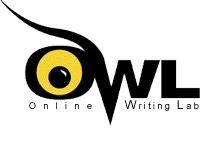


The American Psychology Association (APA) citation style is most commonly used in disciplines such as social sciences, business, nursing, and education.
| In-Text Citation | Works Cited Page | |
|---|---|---|
| Journal Article | (Yodovich, 2021) |
Yodovich, N. (2021). Defining conditional belonging: The case of female science fiction fans. Sociology, 55(5), 871–887. https://doi.org/10.1177/0038038520949848 |
| Journal Article with Multiple Authors | (Fulkerson et al., 2006) |
Fulkerson, J. A., Neumark-Sztainer, D., & Story, M. (2006). Adolescent and parent views of family meals. Journal of the American Dietetic Association, 106(4), 526–532. https://doi.org/10.1016/j.jada.2006.01.006 |
| Book | (Golding, 2019) |
Golding, D. (2019). Star wars after Lucas: A critical guide to the future of the galaxy. University of Minnesota Press. |
| AI | (OpenAI, 2023) | OpenAI. (2023). ChatGPT (Mar 14 version) [Large language model]. https://chat.openai.com/chat |
The SIFT Method is a tool for evaluating information in 60 seconds. It focuses on searching other sources to verify the creator's authority and the creator's claims.
The SIFT Method by Mike Caulfield is licensed under a Creative Commons Attribution 4.0 International License.

| The authors of the article conducted their own original research. | The authors synthesize and analyze known research on a particular topic to discover trends. |
| Has a specific structure: introduction, methods, results, discussion, conclusion, references | Its structure can be changed depending on the topic studied. |
|
Uses first and second person like "We discovered" or "I found" Refers primarily to "this study" (singular) |
Uses third person like "they discovered" or "Choi and Wilson concluded" Refers to multiple studies |
| Its goal is to add a new contribution to scientific research. | Its goal is to summarize current research, draw connections, and show gaps needing further research. |

1. Read the abstract
An abstract is a summary of the article, and will give you an idea of what the article is about and how it will be written. If there are lots of complicated subject-specific words in the abstract, the article will be just as hard to read.
2. Read the conclusion
This is where the author will repeat all of their ideas and their findings. Some authors even use this section to compare their study to others. By reading this, you will notice a few things you missed, and will get another overview of the content.
3. Read the first paragraph or the introduction
This is usually where the author will lay out their plan for the article and describe the steps they will take to talk about their topic. By reading this, you will know what parts of the article will be most relevant to your topic!
4. Read the first sentence of every paragraph
These are called topic sentences, and will usually introduce the idea for the paragraph that follows. By reading this, you can make sure that the paragraph has information relevant to your topic before you read the entire thing.
5. The rest of the article
Now that you have gathered the idea of the article through the abstract, conclusion, introduction, and topic sentences, you can read the rest of the article!
To review: Abstract → Conclusion → Introduction → Topic Sentences → Entire Article
Used with permission from the Undergraduate Library, University of Illinois at Urbana-Champaign for use or adaptation of materials.

Gordon College is New England’s top Christian college, located on the North Shore of Boston in Wenham, MA.
Gordon College | 255 Grapevine Road, Wenham, MA 01984 | Telephone 978.927.2300